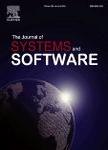版权所有:内蒙古大学图书馆 技术提供:维普资讯• 智图
内蒙古自治区呼和浩特市赛罕区大学西街235号 邮编: 010021

作者机构:Univ Politecn Cartagena Syst & Elect Engn Div DSIE Res Grp Cartagena Spain
出 版 物:《JOURNAL OF SYSTEMS AND SOFTWARE》 (系统与软件杂志)
年 卷 期:2012年第85卷第11期
页 面:2504-2518页
核心收录:
学科分类:08[工学] 0835[工学-软件工程] 0812[工学-计算机科学与技术(可授工学、理学学位)]
基 金:Fundacion Seneca of the Murcia Region [15374/PI/10] CICYT EXPLORE, Ministry of Education and Science. Spain [TIN2009-08572]
主 题:Teleo-Reactive programs Component-based software development Reactive systems Robotics Model-driven software development
摘 要:The Teleo-Reactive approach designed by N.J. Nilsson offers a high-level programming model that permits the development of reactive systems, such as robotic vehicles. Teleo-Reactive programs are written in a manner that allows engineers to define the behaviour of the system while taking into account goals and changes in the state of the environment. This article presents a systematic approach that makes it possible to derive architectural models, with structural descriptions and behaviour, from Teleo-Reactive Programs. The development of reactive systems can therefore benefit significantly from a combination of two approaches: (1) the Teleo-Reactive approach, which is oriented towards a description of the system from the standpoint of the goals identified and the state of the environment and (2) the architectural approach, which is oriented towards the design of component-based software, in which decisions are conditioned by the need to reuse already tested solutions. The integration of this work into a development environment that allows code to be generated via model transformations opens up new possibilities in the development of this type of systems. The proposal is validated through a case study that is representative of the domain, and a survey carried out with post-graduate students. (c) 2012 Elsevier Inc. All rights reserved.